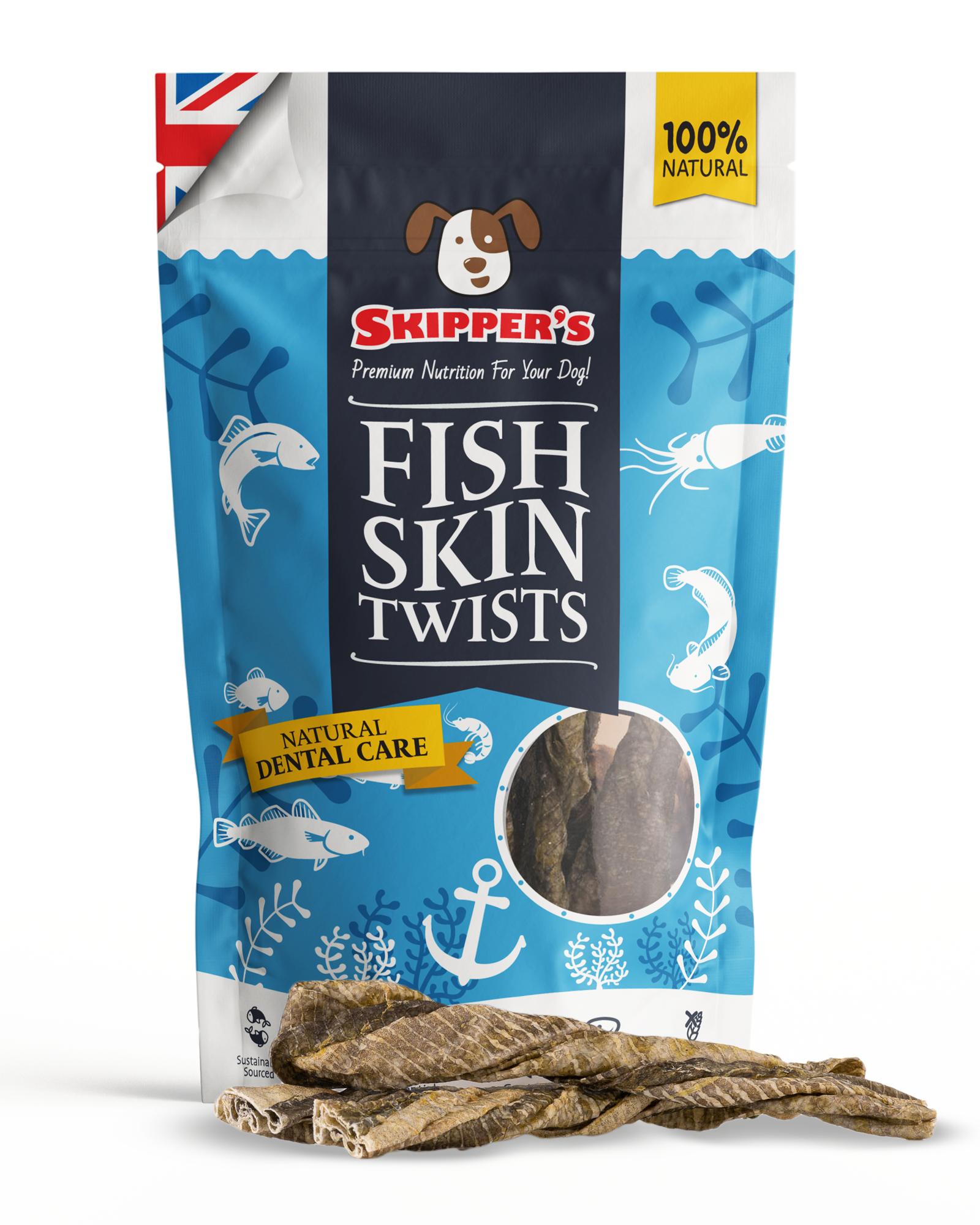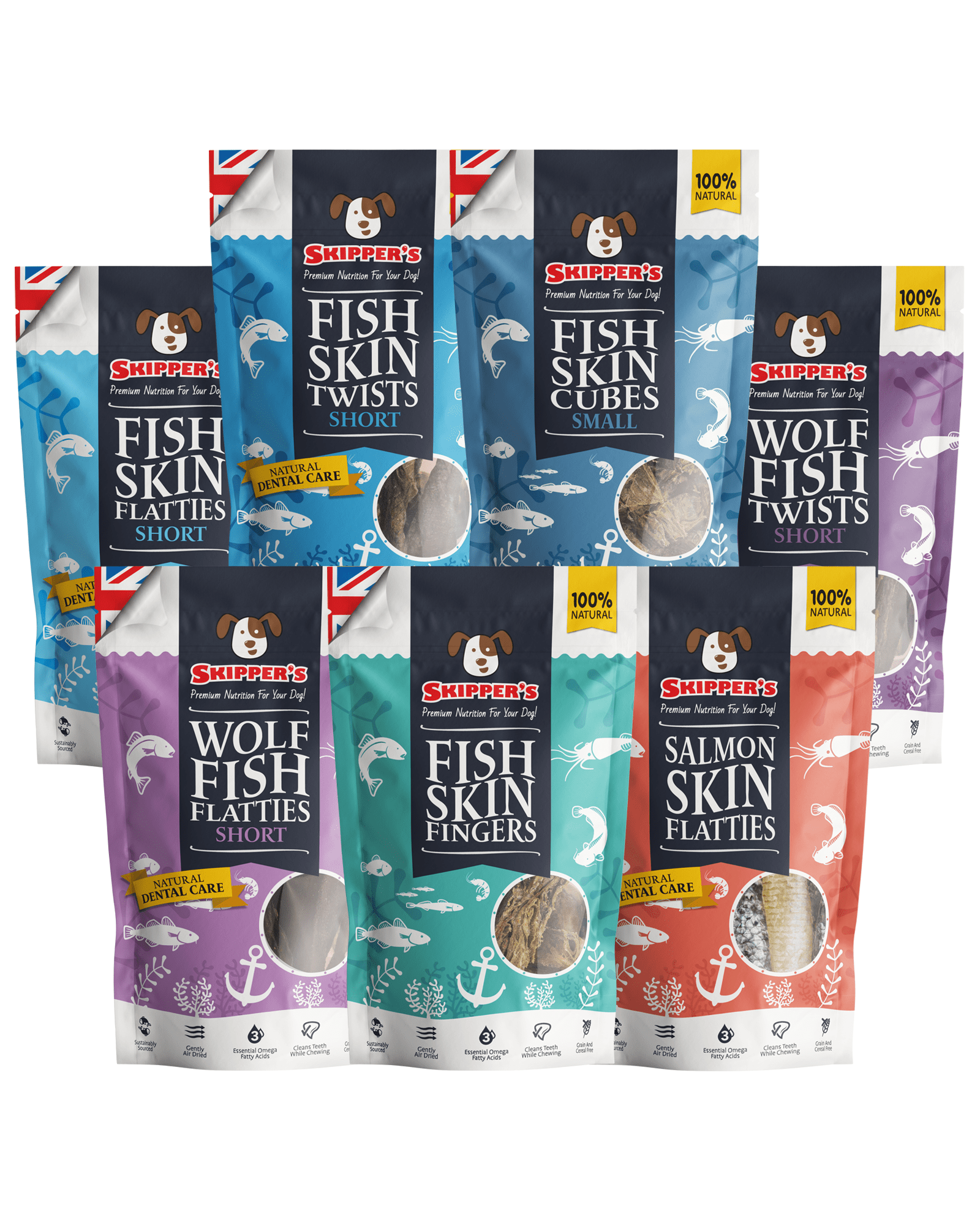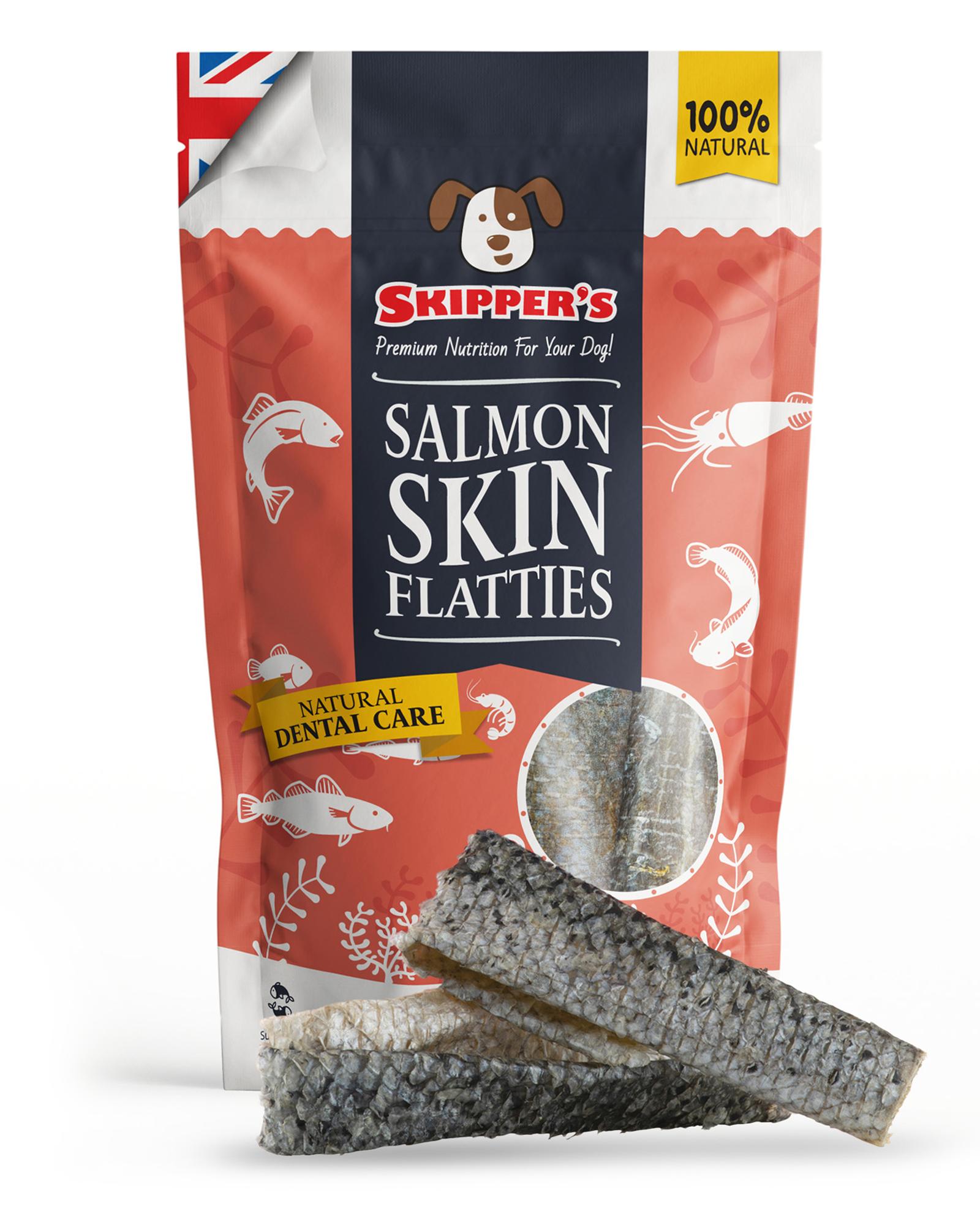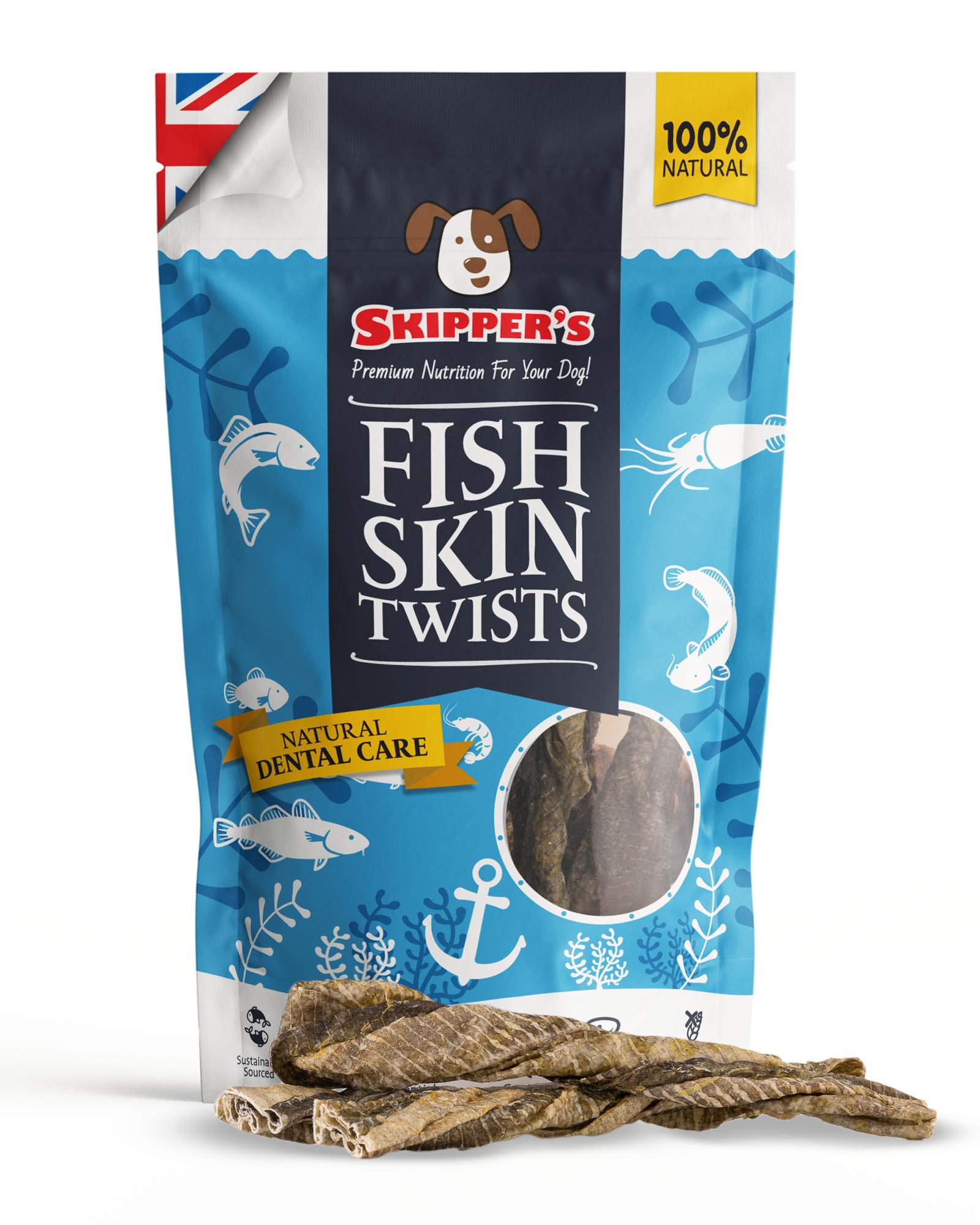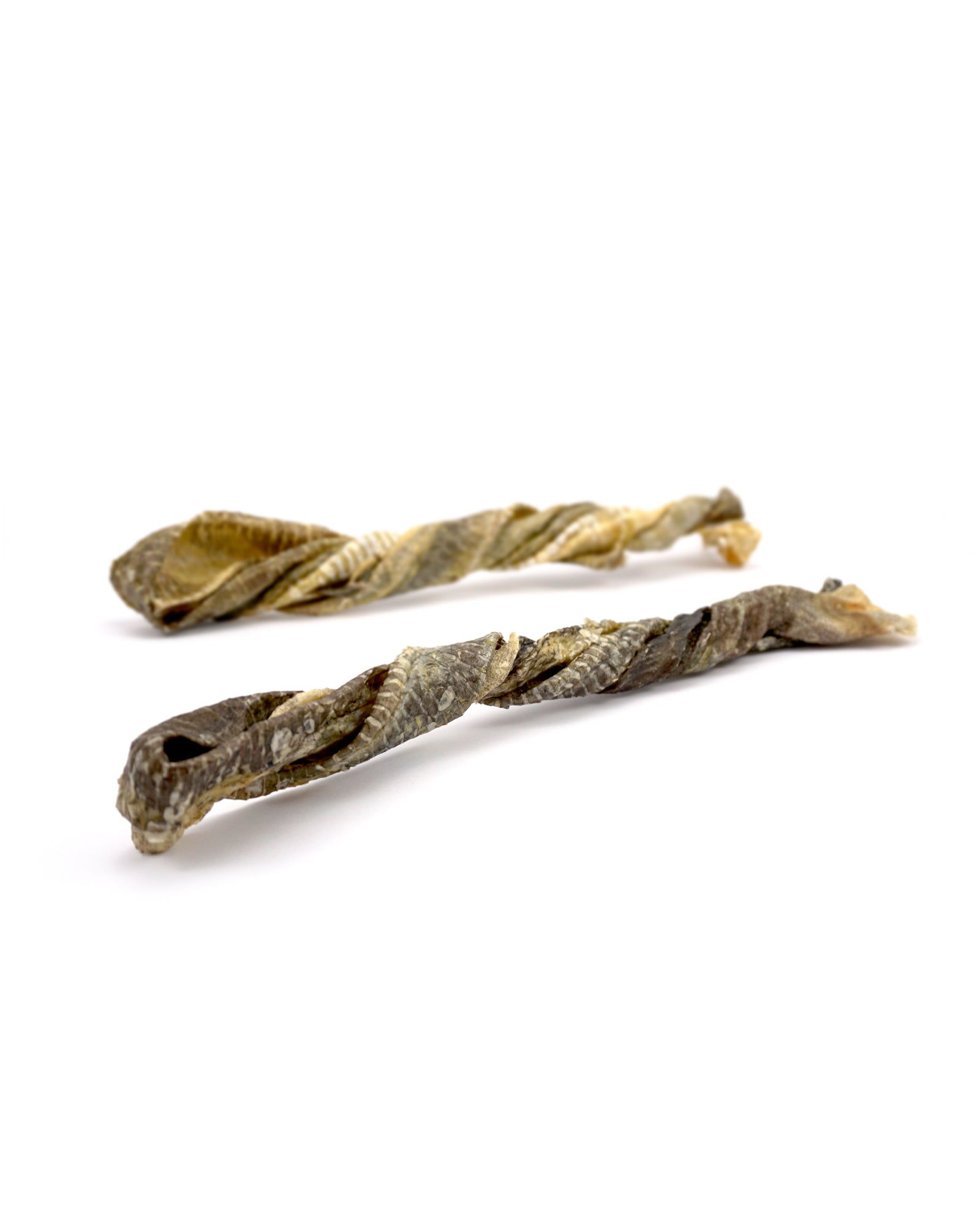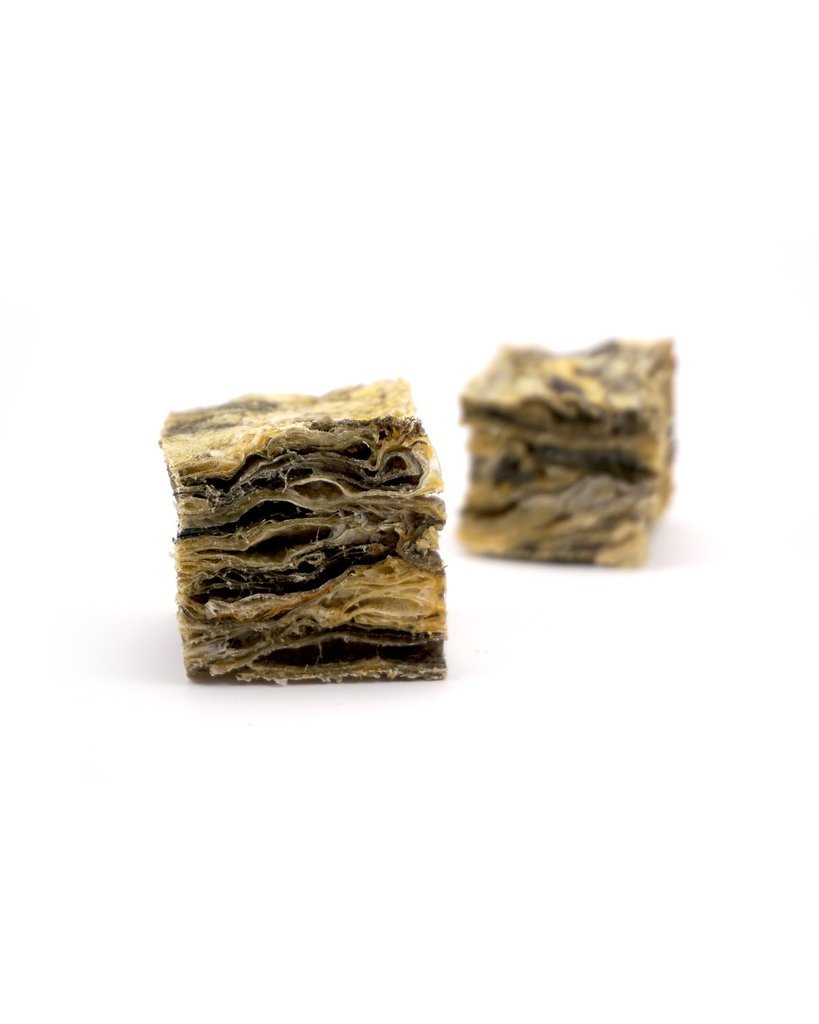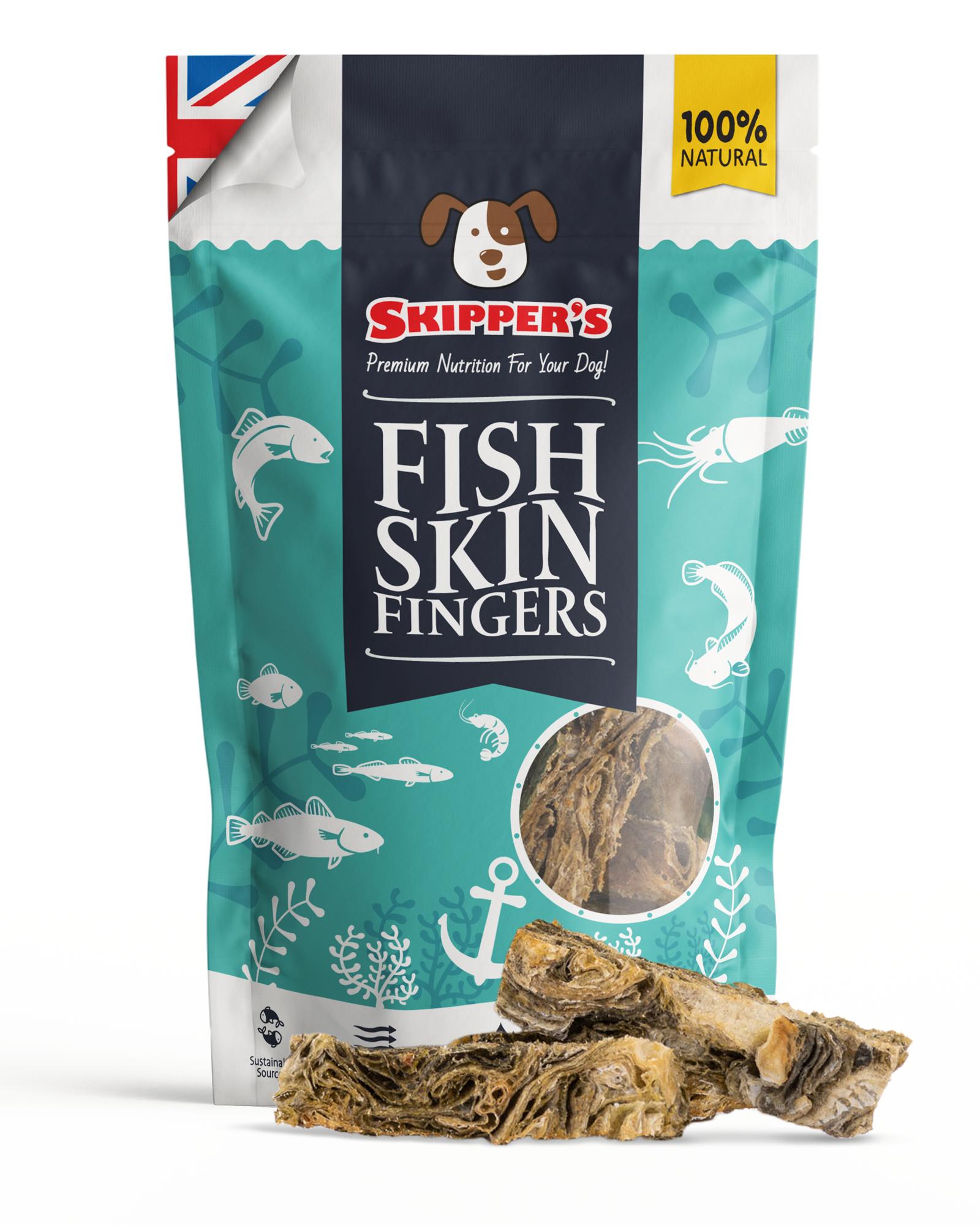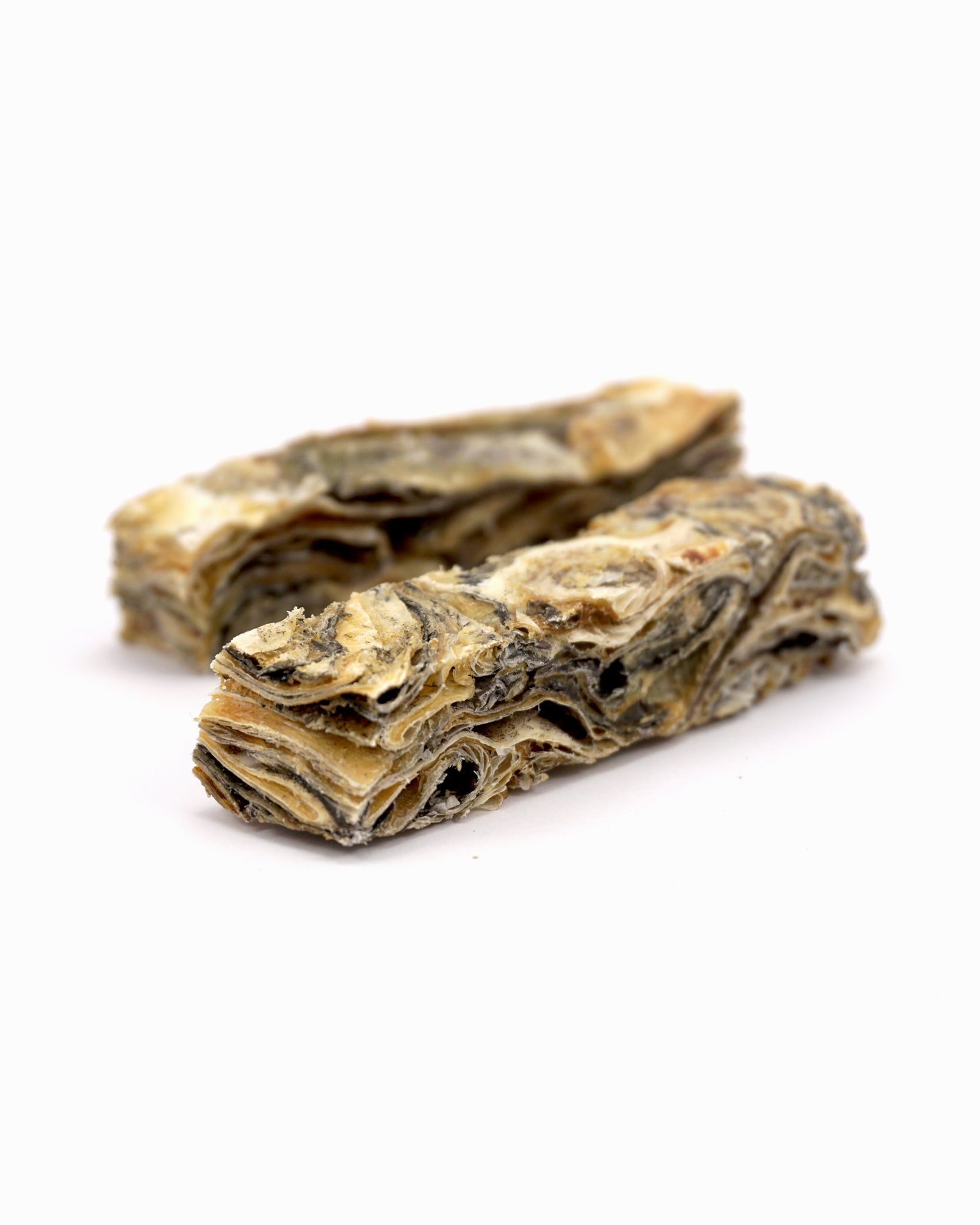We asked our customers what were the most prevalent health issues their dogs suffered from before they decided to try Skipper's. The three most common problems customers faced by far were Dental Care, Joint Care and Skin & Coat issues, followed by eye problems, heart health, hyperactivity and other issues.
So here is our guide to tackling Dental Care, Joint Health, Skin & Coat condition and an often overlooked issue, our dogs Mental Health.
DENTAL CARE
Brushing our teeth is a daily activity we do to keep our teeth clean and healthy. It's a routine that's almost subconscious to us and the same activity should apply to our four-legged friends to keep their dental hygiene in check too! But did you know that only 65% of dog owner’s check their dog’s teeth?[1]
Eating, playing, tasting their surroundings and exploring. Your dog’s mouth goes through quite a lot in a day. Their mouths are their hands in many ways and that’s why it’s even more important to keep their teeth in tip-top condition.

Dental Diseases in dogs

Vets treat an average of 11 cases of tooth and gum disease in dogs every week![3] Over 85% of dogs in the UK over the age of 3 will be affected by dental disease.[2] This makes dental disease a very common problem in dogs.
Only a third of British dog owners brush their dog’s teeth![3] Like most things in life, prevention is better than cure, that’s what makes these facts quite shocking because dental disease can be easily prevented if action is taken early.
23% of tooth and gum diseases in dogs are due to the owner’s not brushing their dog’s teeth often enough or correctly, a shocking 42% of cases are due to a poor diet. These are percentages gathered from vets across the UK.[3]
Dental disease can be hard to spot in dogs at first as there aren’t any outward signs or symptoms, additionally, dogs will continue to eat despite any pain or discomfort they may be experiencing. It is important to do a physical check inside their mouth due to early signs being hard to spot.
Dental disease symptoms in dogs
- Tartar
- Bad breath
- Difficulty eating, possibly due to pain
- Weight loss
- Red, inflamed, bleeding gums
- Loose teeth
- Missing tooth
- Broken teeth
- Dropping food
- Excessive drooling
- Preferring soft food to biscuits
- Face swelling
- Pawing/rubbing the mouth/face
- Blood Stained saliva
- Favouring one side of the mouth

Keeping your dog’s teeth clean by brushing
Brushing your dog’s teeth daily with a special dog toothbrush and toothpaste helps to reduce plaque and keeps teeth clean. Don’t use human toothpaste as it can be toxic to dogs due to the chemicals found in the ingredients. The main chemical that is toxic to dogs is Xylitol, it is an artificial sweetener that is in the majority of human toothpastes. The toxicity in fact can have a rapid effect on your dog.Xylitol can have an effect within 10 to 15 minutes of ingestion, worst case, the chemical can cause life-threatening low blood sugar.
How to brush your dog’s teeth

- The first step is to get your dog comfortable and used to having your fingers around their mouth, do this by gently stroking your dog’s cheek and having your hand around their mouth. This should be practised for around two to three days.
- Gently use a finger to get your dog comfortable with having something touching their teeth and gums. Do this for a few days.
- Introduce dog toothpaste on your finger and allow your dog to lick the toothpaste off.
- Once you’re confident that your dog is comfortable with your finger being in their mouth, introduce the dog toothbrush with the same toothpaste on. Do not put the toothbrush in their mouth.
- Now that they’re comfortable with the toothbrush and toothpaste, start to gently brush their front teeth in circular motions. Stop regularly to allow them to lick the toothbrush, this is to continuously reward them./li>
- Once your dog is comfortable and happy with allowing you to brush their front teeth, start to brush their back teeth, following the same steps of motion and stopping.
A couple of weeks following these steps, brushing your dog’s teeth should be fuss free! Remember to try to focus on brushing their teeth where it meets the gum.
Unfortunately, there are cases where dogs simply refuse to have their teeth cleaned with a toothbrush. If your dog is one of those few, don’t worry, there are other ways of reducing plaque and preventing teeth and gum disease.
- Dental Chews are one of the most common methods owners use to clean their dogs teeth and they come in various forms.
- 42% of dental disease cases recorded were due to a poor diet.[3] Therefore, it makes sense that one of the ways to prevent dental disease is tackling their diet. There are diets specially designed to reduce plaque build-up. Advantages of these diets are that you can keep your dog’s teeth clean simply by feeding them. Similarly, dental chews are also a great way of tackling plaque.
- Dental toys encourage your dog to chew on the toy, this helps to clean their teeth and gums without causing any damage. Once again, this method is not as effective as daily brushing
- There are oral hygiene rinses that can be squirted into your dog’s mouth. This reduces plaque and bacteria build-up due to the antibacterial action, however, this method is still not as effective as brushing.
- Finally, long acting dental gels. The gel is thick and contains an antibacterial formulation, the stickiness will coat the teeth and remove the need for brushing. Although this method is effective, there is no mechanical action, therefore, leaving first place effectiveness to teeth brushing.
Dental Chews
It was surveyed that 63% of dog owners gave their dog dental chews regularly [1] making them one of the most common doggy dental-care methods. Dental chews can be effective at reducing plaque and tartar build up, but a good brushing routine will give the best results.
There are numerous varieties of dental chews out there, most rely on the shape of the chew to scrub at plaque and tartar while your dog chews, and some have natural or chemical active ingredients to help. By far the most common dental chews are Pedigree Dentastix.
The ingredient that carries out the teeth cleaning action in Pedigree Dentastix and other similar chews is Sodium Tripolyphosphate (STTP) or E451. Sodium tripolyphosphate is a salt of triphosphoric acid. It is manufactured in chemical laboratories and has a variety of uses. STTP is mainly used as a powerful cleaning agent and can be found in detergents, this is because it can deeply penetrate the fibers of clothes. In small doses, Sodium tripolyphosphate is found as a preservative in meat and seafood, it slows down the spoilage process. STTP maintains the natural colour and improves the texture of meat and seafood. Sodium tripolyphosphate has other uses such as; tanning agent for leather, petroleum refining, metallurgy, water treatment and mine applications. Pedigree states there are clinical studies that show STTP can prevent tartar build-up by up to 80%.
There are a whole host of concerns regarding the ingredients products like Dentastix use, like Salt, unnamed animal proteins, Potassium Sorbate, Smoke flavourings and other chemical or unnatural additives.

Fortunately there are healthier alternatives than typical dental chews. We recommend looking for dental chews with simple, natural ingredients. Chews that are tough and abrasive are the best for cleaning teeth as your dog will have to really work hard to eat them. In that chewing process, the chew will naturally scrape off plaque.
Our treats here at Skipper’s are one of the reasons so many customers who's dogs suffer with dental problems use our products. Treats from our Fish Skin Jerky range are fantastic natural choices for tackling plaque and tartar in dogs. They have naturally abrasive textures, they're single ingredient, just Fish, and so don't have any of the unwanted ingredients or artificial additives common in other treats. They're also low in fat, with our cod varieties are only 2.5% fat. And finally they're packed with Omega Oils and all of the benefits they offer, which we'll read about in the next two sections, Joint Care and Skin & Coat Condition. Click here to shop our Jerky Range.
If you notice that your dog is showing signs of dental disease, it is recommended to visit your vet asap to get your dog’s teeth and gums checked out. It’s better to tackle any issues at the early stages.
Joint Care
Running for the ball, zoomies, jumping for the frisbee, you can agree dogs’ joints get put through a lot. The more their joints are used, the more potential injuries your dog can have, this increases the risk of joint-related problems. Just like humans, cartilage protects your dog’s bones and joints from daily movement. Healthy cartilage is important as it is essential to allow your dog movement and proper joint function. The function of your dog’s joints can have a dramatic effect on their quality of life.
Signs of joint problems
- Less active
- Difficulty with common activities
- Over lameness
- Increased irritability
- Slow to get up in the morning
- Stiffness
- Limping
- Sleeping more
- Excessive licking of a sore joint
- Swollen joints
- Muscle loss

Causes of joint pain in dogs
Developmental - Developmental joint problems occur when a joint or ligament doesn’t develop correctly, this can happen in a variety of different ways. This issue can then cause the joint to not function as intended. Examples of developmental joint problems are hip dysplasia and elbow dysplasia.
Degenerative - Degenerative joint disease (DJD) occurs due to the cartilage being unable to remain in its healthy state. The signs can be subtle at first however, it eventually progresses and causes overt stiffness or lameness. DJD refers to arthritis or osteoarthritis. Arthritis is inflammation in the joints, the term arthritis is mainly avoided because it’s not always an accurate term to explain what’s happening to a dog’s joint(s). Osteoarthritis is a form of arthritis, dogs tend to get this form of arthritis due to a specific underlying cause, therefore is usually seen at an earlier stage of a dog’s life.
DJD prevention
Weight - Many dogs that have DJD are in fact overweight. Overweight dogs have a higher risk of having joint problems due to the excess weight putting pressure on their joints. Obese dogs are more likely to develop degenerative join disease. Keeping your dog at a healthy weight (for their breed) is recommended to prevent more damage on joints.
According to a study, vet and vet nurses estimated that 46% of the dogs they see each week are overweight/obese. Additionally, almost half of the vets and vet nurses also stated they felt the number of overweight/obese dogs they see has increased in the last two years.[1]
Exercise - It is important that your dog gets regular exercise, this is to help prevent stiffness and muscle wastage. Little, but frequent walks are recommended as that long walks may be too much for your dog.
Diet - Quality dog food for your dog’s diet can help in more ways than you think, getting the correct nutrients and ingredients can really help to slow down the deterioration of your dog’s joints. If you’re unsure, consult your vet to help make a choice on the food best suited for your dog. If your dog struggles to bend down for their bowls, it’s highly recommended to raise the bowls up for more comfortable eating and drinking times
Nutrients - Similarly to the last point, certain nutrients can really help slow down the process of the deterioration of their joints. In order to maintain your dog’s joints, the look out for nutrients like Chondroitin, Glucosamine HCL and Omega fatty acids. Not only do these help maintain joints, they also help maintain ligaments, tendons, cartilage and synovial fluid. Fish based products in particular are naturally high in Omega Oils.
Comfort - Try to limit stair climbing and any sort of jumping as this can cause more damage. Keeping your dog warm is also important due to the cold aggravating joint pain.
Vet visits - Monitoring your dog’s condition with regular vet visits really helps with maintaining your dog’s joints, this is because the vet is able to advise on any sort of treatments best suited for your dog.
Therapies - Despite other joint care advice, sometimes alternative therapies can really help to improve your dog’s mobility and increase their circulation. Alternative therapies such as hydrotherapy and physiotherapy are great for this
Medication - If inflammation occurs, your vet may prescribe medication in order to reduce the inflammation and help reduce any pain your dog may be experiencing.
Supplements
There are also some supplements you can add to your dog’s diet in order to maintain the condition of their joints. Supplements can promote cartilage repair, stimulate the increase of production of joint lubricating fluid, slow down the deterioration of your dog’s joints, and aid in other aspects of joint care.
A supplement you can add to your dog’s diet are Fish Oils because they're high in Omega fatty acids (Omega 3 & 6). These nutrients are powerful antioxidants that help with relieving inflammation in affected joints.
Skipper's Pet Product's offer supplemental Salmon Oil that can be found here.
Arthritis

Unfortunately arthritis is a very common condition amongst dogs. It is a condition that affects your dog’s joints which causes them to become swollen and often painful
The cause of arthritis is mainly normal wear and tear, it generally occurs in the later years of a dog’s life. There’s a high chance of arthritis occurring due to developmental issues. In addition, bad injuries can be the cause of arthritis for a dog, later in their life.
Sometimes arthritis doesn’t occur from external activities. Genetics play a role in the reasoning for a dog having arthritis. This is because some breeds have a higher risk of developing arthritis compared to other breeds.
If your dog is diagnosed with arthritis, you will need to control the amount of exercise your dog gets to maintain their muscle tone. It’s important to remember that rest is vital as that too much exercise can cause more damage to your dog’s joints, therefore, do gentle exercises with your dog. Exercises to avoid are running and jumping activities. An activity to try is swimming, you can visit a hydrotherapy spa to achieve this exercise.
Skin and Coat
Your dog’s skin is essential for their protection and to keep warm. Any problems can have a big impact on your dog’s life. The signs of your dog having any sort of skin or coat problem are generally noticeable. Hearing them constantly scratching or licking can be a little irritating but also very concerning. The problems range from mild to severe however, it is always best to get an appointment with the vet booked if you notice any signs.

Signs of skin issues with dogs
- Itchy skin
- Dry, flaky skin
- Bald patches (alopecia)
- Licking the skin
- Dermatitis (red, inflamed, sore skin/rash)
- Smelly
- Weepy skin (pyoderma)
- Colour change in coat
- Bumps
- Lumps
The common causes of skin issues in dogs are environmental allergies, parasites, flea allergies, various infections and food allergies. Contrary to popular belief, the majority of skin issues are not caused by food allergies. According to the 2018 State of Pet Health Report, food allergies only affect 0.2% of dogs.[4]
Dog owner’s assume the cause of itchy skin is due to a food allergy when in fact, food allergy is only responsible for 1% of all skin issues in dogs.[5] Additionally, food allergy is the third most common skin allergy. Over the past 10 years flea allergy has been on a rise by a 12.5% increase. Similarly, environmental allergies have been on a rise with a 30.7% increase.[4]
The top 10 skin issues in dogs
- Environmental allergies - Similar to how humans can have hay fever, dogs can have an allergy Atopy, the sign is an Increased or sudden onset of itching focused at the face, feet, chest and stomach generally indicates an environmental allergy, the itching is triggered when your dog is in contact with the cause of the allergy. Most common environmental allergies for dogs can be caused from grass, dust mites and pollen. Severe cases are caused from shampoo allergies.
- Folliculitis - This allergy generally occurs when your dog is already experiencing another skin issue such as mange. Folliculitis is inflamed hair follicles, they become inflamed due to infection caused from another allergy. The appearance of this allergy comes in many forms, sores, bumps, and scabs on the skin.
- Impetigo - Occurs more in puppies and can be indicating an underlying skin condition, with this, it is important to visit a vet to seek expert treatment. The appearance of Impetigo can be blisters found mainly on your dog’s stomach, these blisters can burst and scab over.
- Food allergies - Just like humans, dogs can have food allergies too, in order to target what food/nutrient that your dog is allergic to, your dog will go through an elimination process similar to the human process. The elimination lasts around 8-12 weeks.The signs of a food allergy are similar to environmental allergies. Your dog will show signs of increased itching focused around the face, feet, ears and anus. The food allergy can be absolutely anything, it is essential to visit a vet as soon as possible.
- Ticks and fleas - This is the most common skin allergy that dogs can experience, the main sign for this allergy is your dog itching profusely. This may be accompanied with your dog chewing the fur in the same area. In more severe cases, the skin can get red, inflamed, and the fur can fall out due to excessive chewing of the fur. Did you know that 21% of dogs have not been treated for fleas and only 68% of owners check their dogs for fleas, mites or ticks.[1]
- Ringworm - This is a fungus and not a worm. The fungus is highly contagious to other animals and even humans. The appearance of the Ringworm is a circular, crusty bald patch. This mainly appears around your dog’s head, paws, ears and front legs. These can also be accompanied with the skin being red and inflamed due to irritation from excessive scratching.
- Mange - Dogs have several species of mites that live on their hair and skin, mange is a severe skin condition that is caused by 2 different reasons. The first cause is demodex mite, this generally affects dogs under 1 years old or older dogs that have an underlying condition. The second cause is sarcoptes mites, first signs are in your dog’s ears and are accompanied with intense itching. Unfortunately the other signs that can be seen with this type of mange are hair loss and redness.
- Yeast Infection - This infection appears in the warm, hard to reach areas of your dog’s body. Usually found in the ear canal, between the toes, groin and perineum. Signs of yeast infection are itching and biting at the affected areas. In addition to those signs, the infection can be followed with an unpleasant smell.
- Lupus - This disease can be very serious if left untreated, therefore, it is essential to book an appointment with a vet. Lupus is an autoimmune disease therefore, this disease attacks its own cells. The disease appears around your dog’s nose, paws, and eyes. If you notice the sore on your dog’s skin isn’t healing over as quick as you think it should, this could be a sign of Lupus, contact a vet asap.
- Dandruff - Another condition that dogs share with humans, dandruff in dogs can be a sign of an underlying problem. Although some dogs are prone to dry itchy skin, this condition can worsen in winter and due to their diet. It is recommended to include oils such as Omega 3 and 6 fatty acids into their diet, these oils help to keep your dog’s coat shiny and most importantly, healthy.
Treatments
When it comes to skin diseases in dogs treatment is usually applied directly to the surface of the skin. This treatment can be beneficial in addition to systemic treatment.
Shampoo therapy is the main topical treatment for specific skin conditions. Before applying medical shampoo, it is important to wash your dog with a cleansing shampoo and then thoroughly rinse it off. Washing your dog before applying the medical shampoo allows the shampoo to be more effective as some medical shampoos only work on a clean coat. In order for the treatment to be successful, most medical shampoos have to be applied regularly, ask your vet how often you must apply the medical shampoo.
Benzoyl Peroxide Shampoo is an example of a medical shampoo used to treat one of the skin conditions found in dogs. The shampoo specifically helps treat dermatitis, dog acne, seborrhea and demodectic mange.It does this by flushing out the hair follicles, degreasing the coat and reducing the bacterial contamination, all while moisturising the skin. There are other medical shampoos such as; an allergy relief shampoo used to treat contact allergies and hypoallergenic shampoo used to treat hives.
Adding supplements into your dogs diet may be a good idea because your dog may be lacking certain nutrients, vitamins, etc. If your dog has skin allergies, the reason may be because they’re not fully nourished therefore, adding protein, zinc, fatty acids and vitamins would be necessary to maintain healthy skin. Similarly, if your dog has dry skin, adding omega 3 fatty acids, digestive enzymes, garlic or flaxseed oil into their diet is important to avoid hair loss and irritation.
Your dog requires higher levels of certain nutrients during growth than during their adulthood. Due to the limiting ways your dog has of fighting diseases, it’s important to make sure your dog is getting enough nutrients in their diet. Nutritional deficiency can have a huge effect on a dog’s skin and haircoat. One of the nutrients to add to your dog’s diet is Omega 3 fatty acids, including this into your dog’s meals can have a dramatic difference to the appearance and condition of your dog’s skin and coat.
Other ways of treating skin conditions are topical therapy, antibiotics and antiparasitics. Remember to contact your vet if your dog’s skin condition has not improved for more than 3 days.
Mental Health (Boredom Busting)
Dogs get bored just like we do. Are they getting enough physical exercise, mental exercise and are they lonely? They have all that extra energy, it needs to be released somewhere. Boredom can cause bad behaviour in your dog, that’s why it’s important to find ways for them to release all their extra energy without any of your personal items being destroyed in the process.
Signs Your Dog Is Bored
- Barking Incessantly
- Tearing up furniture
- Destructive chewing
- Stealing food
- Trying to escape
- Pawing at you for attention
- Sleeping all the time
- Obsessing over their tail
- General mischief
Is this a nation of lonely dogs? In a 2017 report, the figures came out that 2.1 million dogs are left alone for 5 or more hours on a typical weekday. Data has then shown that the figure had risen for 2018, 24% of dogs were being left alone for 5 hours or more on a typical weekday, a 1% increase from 2011 figures.[1]
Due to dogs spending so much time alone, the chances of them being bored and under-stimulated increases. It’s like a domino effect. When your dog is unable to release their extra energy and they’re left alone and bored, it can have a big impact on their well being. The effects on their overall behaviour can be negative. It was reported that 623,000 (7%) of dogs were reportedly showing signs of distress from the effects of being left alone.[1]
There are many ways to enable your dog to release extra energy or to reduce the chances of them getting bored and lonely. If you don’t already, taking them on a walk at least once a day can be very beneficial, playing fetch, teaching them new tricks is not only a form of physical activity, but also a mental exercise too. Interactive toys are also a great way to keep your dog occupied if you’re not there to play with them.
Excessive chewing
Although chewing is a natural behaviour in dogs, excessive chewing in the wrong areas can be a sign that your dog is bored. The majority of owners expect to see the excessive chewing occur on furniture or shoes however, some dogs chew on their own bodies, therefore, it’s important to keep watch of that as that you don’t want your dog hurting themselves. Chewing for younger dogs can be a way of relieving pain from incoming teeth, for old dogs, it can be a way for them to clean their teeth. Overall, chewing for dogs combats boredom and can relieve mild anxiety and frustration.
Long lasting, healthy dog chews like Skipper's, or durable dog toys are great for dogs that like to chew when they're bored.

Ways to help combat boredom in dogs
Physical activity
- Taking your dog on 1 to 2+ walks a day - Allow your dog to explore, especially with their nose. If you already take your dog on walks, take them to a new area, this will allow them to sniff new things, it can be very exciting. However, a new environment can be too much for a nervous dog therefore, allow your dog to guide you where they want to go on a normal walk, or take a slightly different route to ease them into it. Make sure the places you walk are safe for the dog.
- Play fetch - If you’re confident enough to take your dog off of their leash, play fetch in the park, the park's greenery is most likely larger than your back garden therefore, a much larger space for them to run and catch the ball. On the other hand, if you’re still not confident enough to take them off of the leash in public, playing fetch in your back garden can still be efficient.
- Dog sport - There are a lot of dog sport groups that you can join, agility, Flyball, nose work and tracking, and more! These are great fun for both you and the dog.
Mental stimulation
- Mental stimulation - This is just as important as physical exercise, mental stimulation gets your dog’s brain working and helps to avoid them getting bored. There are even mental stimulation toys, diy’s and activities that your dog can do whilst you’re not at home. For more information regarding mental stimulation, read our blog ‘Mental Stimulation’
https://www.skipperspetproducts.com/blogs/news/mental-stimulation-for-dogs - Dog training - Short and sweet training sessions are great as a bonding activity and great for mental stimulation, these sessions can be 2 to 5 minutes long. Remember, yummy treats or even some kibble from their regular meal portion can be used as individual treats.
Hopefully this information has been useful to you and if your dog suffers from one of these conditions you have some great ideas for how to manage their conditions from now on.
We have a host of products that are great for each one of these issues so whilst your here on the site, why not have a look around and see if there's anything that would suit your dog today.
Sources:
- https://www.pdsa.org.uk/media/4372/paw-2018-full-web-ready-a4-printable.pdf
- https://www.oakhamvethospital.co.uk/attachments/article/194/Dental%20disease%20in%20dogs.pdf
- https://www.directline.com/media/archive-2016/gum-and-tooth-disease-is-a-growing-problem-for-britains-dogs#:~:text=Vets%20are%20treating%20an%20average,seeing%2020%20or%20more%20cases.
- https://www.avma.org/javma-news/2018-07-15/banfield-few-pets-allergic-food-flea-environmental-allergies-rise#:~:text=Food%20allergies%20affect%20just%200.2,Report%20from%20Banfield%20Pet%20Hospital.
- https://www.pfma.org.uk/food-allergy-factsheet

